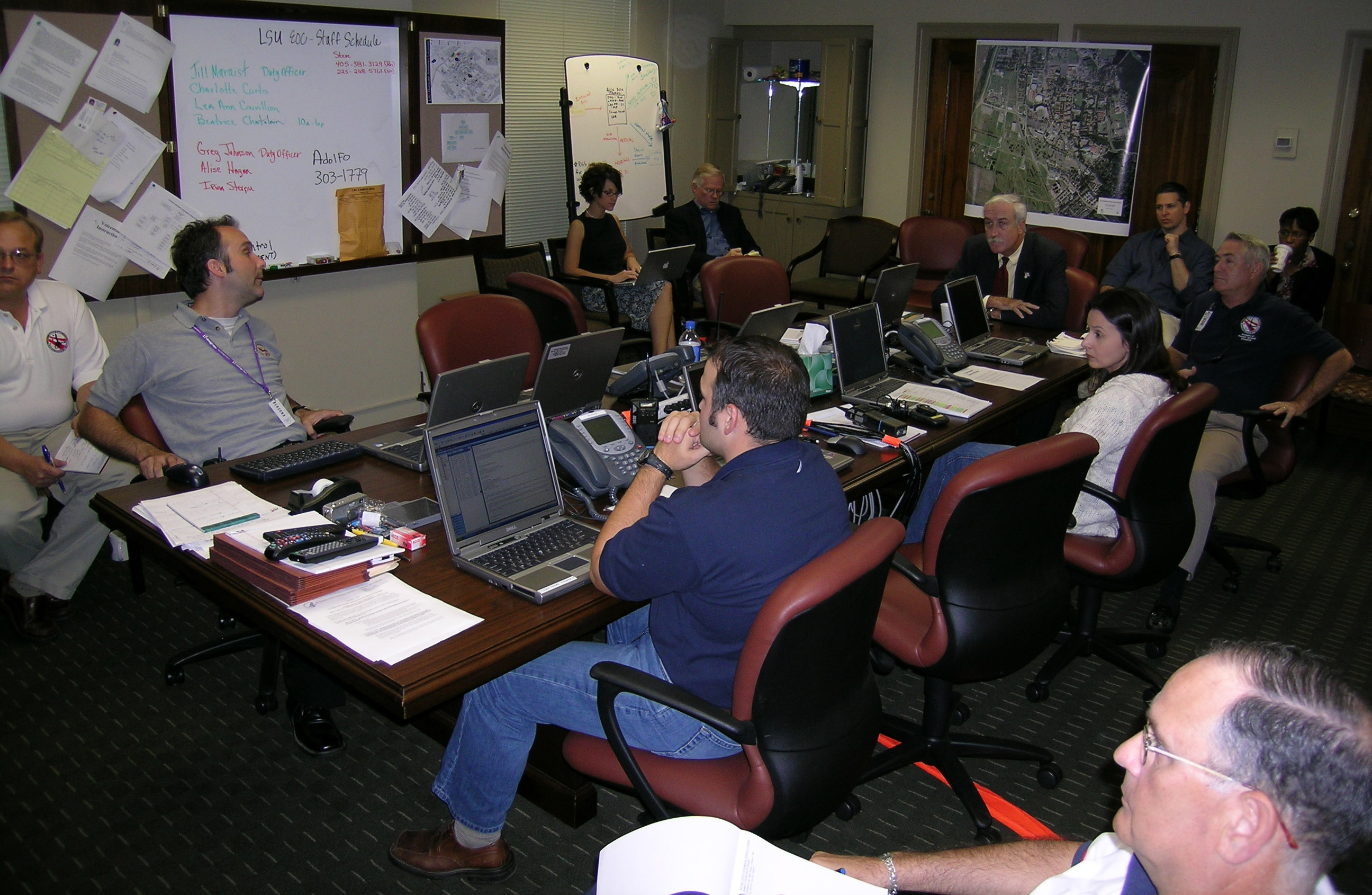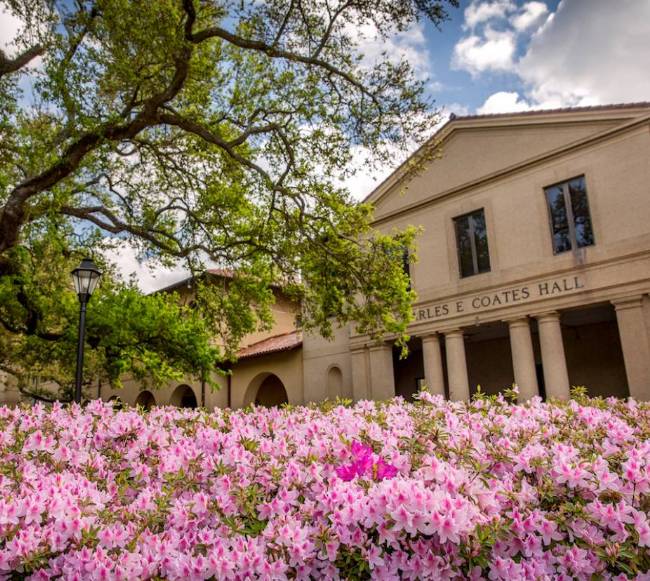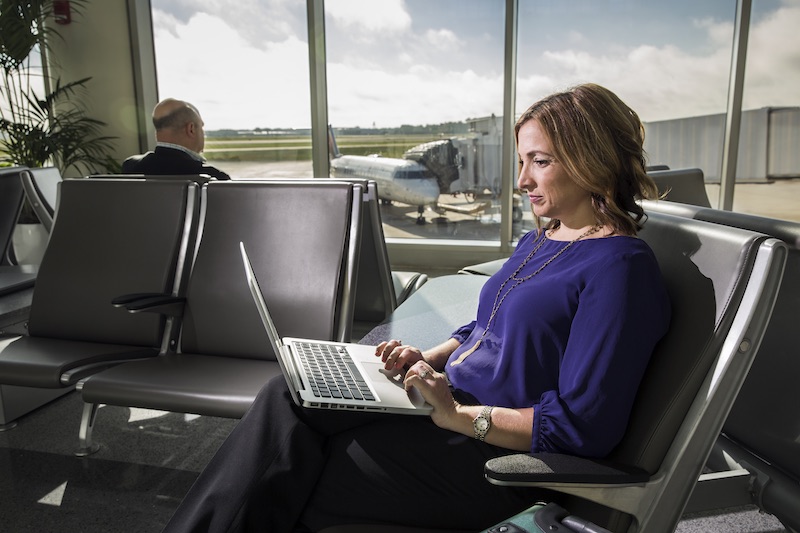LSU’s NCBRT Transformed Campus into Critical Emergency Hub During Hurricane Katrina Response
August 27, 2025
When Hurricane Katrina made landfall in August 2005, LSU found itself with a pressing challenge: how to coordinate campus operations while also supporting the massive statewide and federal relief effort.
Thousands of evacuees, medical teams, and first responders had arrived on campus, straining resources beyond anything previously imagined. LSU’s leadership recognized the need for a single command hub to manage the crisis.
On Aug. 30, 2005, LSU Chancellor Sean O’Keefe directed LSU’s own National Center for Biomedical Research and Training/Academy of Counterterrorist Education (NCBRT) to establish and run the university’s Emergency Operations Center (EOC).

NCBRT staff members brief Chancellor Sean O’Keefe in the LSU Emergency Operations Center during the aftermath of Hurricane Katrina.
– File photo
Known nationally for training responders to handle complex, high-threat incidents, NCBRT was uniquely equipped to step into this role.
Led by NCBRT former Director Tom Tucker, Associate Director Jason Krause, and Assistant Director Deyvon Cooper, the center transformed LSU into a hub of crisis coordination.
As a result, thousands of patients received timely care, first responders gained critical support, and evacuees were triaged safely.
In a Q&A, Krause shares how the plan came together, the challenges the team faced, and the lessons learned that continue to shape emergency preparedness today:
Why was NCBRT selected to run LSU’s EOC?
NCBRT is a national center that provides training for response to various high-threat complex incidents. We are experienced with working across many levels of interagency and have a culture of making and owning time-critical decisions.
Which campus units and external partners were synchronized through the EOC?
So many. For example, on campus, we coordinated with the LSU Police Department, PMAC field hospital, Athletics and Residential Life (billeting National Guard and mutual‑aid personnel), Ag Center Coliseum and Vet School (animal shelter operations), facilities, and communications. Off-campus partners included the State EOC, FEMA, Louisiana State Police, the Governor’s Office, Entergy, and volunteer/nonprofit organizations.
What was the EOC’s focus relative to student‑specific tasks?
The EOC’s primary focus was coordinating response activities—linking campus resources with state, federal, and nonprofit partners; deconflicting missions; and sustaining campus operations that supported the wider Katrina response.
Student‑specific efforts—continuity of instruction, student services, housing, and academic scheduling—were led by the appropriate LSU offices. We maintained high‑level coordination with those teams, but their day‑to‑day work was not our focus.
Those teams did the hard work to not only get LSU students to class, but also to accept displaced students from New Orleans institutions. The NCBRT-led EOC concentrated on the broader response and only engaged students when those paths crossed.
What did a typical day look like?
Mornings began with a shift change and an updated daily task list. The chancellor briefing occurred mid‑day, covering overnight issues, the PMAC field hospital patient load, resource status, and priorities for the next cycle.
Throughout the day, the EOC maintained a common operating picture of all the various response actions and logged tasking, requests, and outcomes. The primary mission was problem solving. For instance, when National Guard troops began arriving from other states, we had to find a solution for where on campus we were going to house them, given the already limited space.
As the Katrina response wound down, and we were disbanded, we got called to stand back up for Hurricane Rita. We had a campus-wide power outage and had to operate with flashlights and field calls from concerned students across campus.
Can you share other examples of problem‑solving?
Helicopters from the Department of Defense, the civil government, and EMS transported patients from New Orleans to the Bernie Moore Track Stadium for transfer into the PMAC field hospital. Early on, medical teams lacked advance information on inbound patients.
At the time, I was also an Air Force Reserve C‑130 crew member with experience in medevac operations, so I led the coordination of a Louisiana National Guard tactical radio station at the track stadium so aircrews could call ahead with patient details. We also organized the field as a standardized landing zone, improving safety and throughput.
NCBRT Assistant Director Paul Garon coordinated the organization of laundry service for first responders by leveraging Tiger Stadium laundry facilities. We also helped establish a comfort station at Alex Box Stadium to triage refugees who needed medical attention versus those who could proceed to the next available shelter.
Did NCBRT continue national training while running the EOC?
Yes. Even as the EOC operated around the clock, NCBRT continued delivering first responder training nationwide through the National Domestic Preparedness Consortium (NDPC). We have a remote warehouse in Illinois that we utilize as a hurricane operations center when there are weather challenges in Baton Rouge.
Even when our state was under such stressful conditions, other jurisdictions across the country needed training. Our model, which includes instructors and experts located across the United States, allows us a high level of continuity of operations.
Turning Tragedy into Impact
Explore LSU’s role in response, recovery, resilience, and research following Hurricane Katrina.


